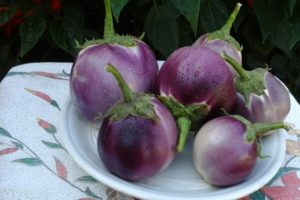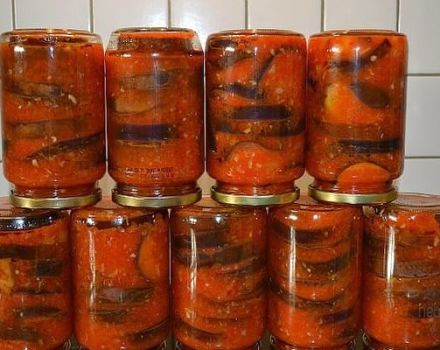Description and treatment of eggplant diseases, their pests and methods of dealing with them
Eggplant is inherently amazing vegetables. They combine not only taste and universal qualities, but also a number of useful components that are so necessary for human health. However, in order to get these fruits on their site, each gardener will have to make a lot of effort. The fact is that there are a large number of eggplant diseases that negatively affect their productivity. What these diseases are, for what reasons they arise and how to deal with them, will be described in detail in this article.
Why eggplants are sick
The birthplace of eggplants is South Asia. This region has an eternal summer with bright sun and intense rains. In this regard, this culture is very demanding on heat and needs certain growing conditions. To get a high yield of eggplants in Russia, summer residents will have to make a lot of effort in agricultural technology and create the most approximate conditions that would correspond to the South Asian climate. Failure to comply with these requirements in plants decreases immunity, which contributes to the development of various diseases, which are reflected in the quality and quantity of fruits.
Typically, eggplants suffer from diseases and pests for the following reasons:
- lack of light;
- water scarcity;
- watering with cold water;
- insufficient air circulation;
- incorrectly chosen growing method;
- lack of nutrients in the soil.
If, however, provide timely care for the plants and suppress the focus of disease, eggplants will be able to restore their strength and bring a decent harvest.
Seedling diseases
There are several types of diseases that can harm eggplants at the stage of their development, that is, seedlings. Moreover, the culprits of their occurrence, in addition to improper care, are contaminated soil or untreated seed material. The occurrence of diseases can be determined by the plants themselves. At the initial stage of infection, the leaves of the seedlings begin to turn yellow. At later stages of infection, the roots of plants wither, which leads to their death. To avoid these negative consequences, when growing eggplant, it is important to pre-plant the soil and seeds.
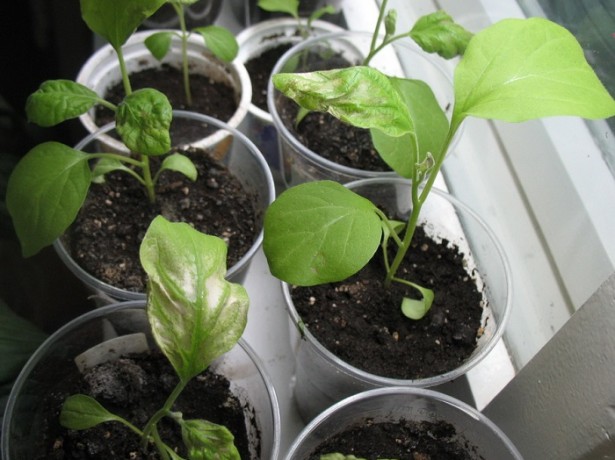
Seed processing:
- Eggplant seeds are disinfected within 20 minutes. in a strong solution of potassium permanganate.
- After disinfection, the seeds are washed with cold water.
- To eliminate essential oils, planting material is poured over with boiling water.
- The seeds are soaked for a day in any eggplant nutrient solution.
After the specified time has elapsed, the seed is again well washed in running water and placed on a damp substrate for germination.
In order to disinfect the earth, it will be enough to warm it up with a temperature of +100 degrees, and wash the pots with soap and pour over boiling water.
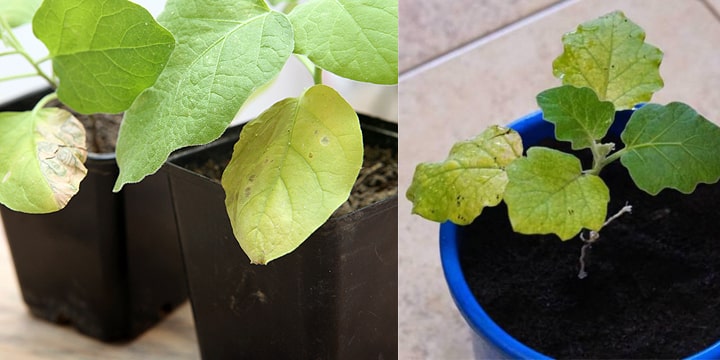
The above manipulations will serve as a good prophylaxis in preventing the development of diseases. If you make mistakes, the following diseases can occur in seedlings.
Rolling the leaves
A pathology such as leaf curling in seedlings can occur for several reasons. Most often this is served by:
- lack of light;
- waterlogging of the soil;
- lack of mineral fertilizers;
- temperature drop;
- damage by pests.
You can determine what the problem of leaf rolling is on your own. To do this, you need to unfold the sheet and pay attention to its inner side. If eggs, cobwebs or other signs of insects are observed on it, urgent action is needed.
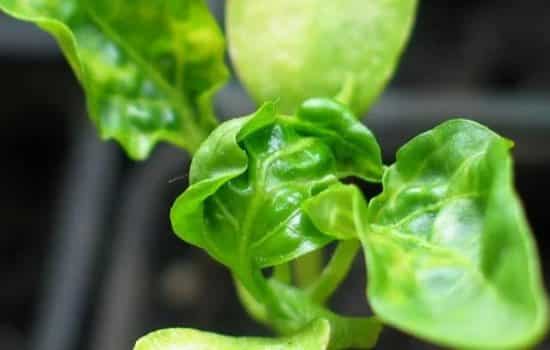
In the fight against pests, experts recommend abandoning chemicals and using folk remedies. One of the most effective methods is a soap solution. To do this, it will be enough to dilute part of the bar of soap in water and treat the leaves of the seedlings with the resulting liquid. If no traces of insects were found, then the plants will need to create optimal growth conditions. That is, eliminate shading and drafts, reduce the amount of watering and feed with mineral fertilizers.
Blackleg
Black leg is considered one of the most dangerous pathologies for eggplant seedlings. This disease is expressed in the darkening and depletion of the plant stem, which over time acquires a grayish bloom and withers. As a rule, the causes of blackleg are contaminated soil or an excess of nitrogen-containing fertilizers.
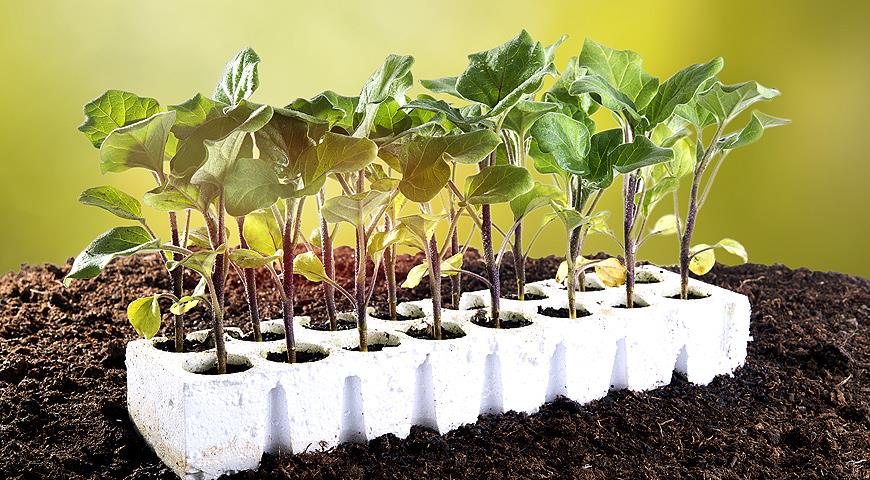
To cope with this disease, seedlings must be watered with "Fitosporin" at the root. Calculation of the drug 100 ml per 10 liters of water. Or use 1% Bordeaux liquid.
Yellow leaves
A typical pathology in eggplant seedlings is the yellowness of the leaves.
Basically, this problem appears for the following reasons:
- lack of moisture;
- watering with cold water;
- lack of nutrients;
- increased acidity of the soil.

To avoid yellowing of foliage, seedlings need to be fed with mineral fertilizers. In this case, you need to ensure that the soil is moist and loose, but not acidic.
Black spot
Black spot, like black leg, is a rather dangerous disease for eggplants. Pathology is expressed in small dark specks on the leaves of the plant.
The main reasons for this phenomenon:
- planting density;
- excess moisture;
- unsuitable soil.

It is possible to cure seedlings from black spot only at the initial stage of its development. To do this, young plants with an interval of 3-4 days are recommended to be sprayed twice with organic fungicides. More affected seedlings must be completely removed, and the soil must be disinfected with a strong solution of potassium permanganate.
Powdery mildew
Powdery mildew is characterized by a white bloom on the leaves of plants. At first glance, such a defect seems harmless. In fact, powdery mildew can lead to partial wilting of foliage or complete death of seedlings. Such a pathology occurs, as a rule, due to increased air humidity or due to a sharp change in temperature.

In the fight against powdery mildew, it is necessary to treat seedlings with microbiological preparations 2-3 times with an interval of 10 days, and sprinkle the soil with ash.It is also recommended for a young seedling to provide protection from drafts and reduce watering.
Dangerous diseases and methods of treatment
After the plants are planted in open ground, they will also require special attention from gardeners. The fact is that the growth of nightshade crops in the same place contributes to the oxidation of the soil and the accumulation of fungal and viral diseases in it.
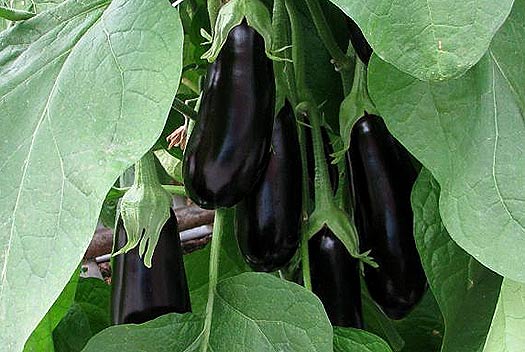
In greenhouse structures or in small greenhouses, due to the lack of regular ventilation, a favorable environment is created for the reproduction of pathogenic microorganisms. In addition, in mini-rooms, low light and high humidity negatively affect the immune system of eggplants. Let's consider the most dangerous diseases of these plants and methods of their treatment.
Phomopsis
Phomopsis is a thermophilic mushroom that is the causative agent of dry rot of eggplant. The disease is expressed in the form of rounded light spots with concentric zones on foliage, stems and fruits of plants. The disease develops at an air temperature of about +20 degrees and a humidity of 60-90%.
Also, this pathology is facilitated by frequent rains and an excess of nitrogen in the soil.
Methods of dealing with phomopsis:
- Presowing seed treatment.
- Spraying the bushes with fungicides.
- Removal of infected plants outside the territory.
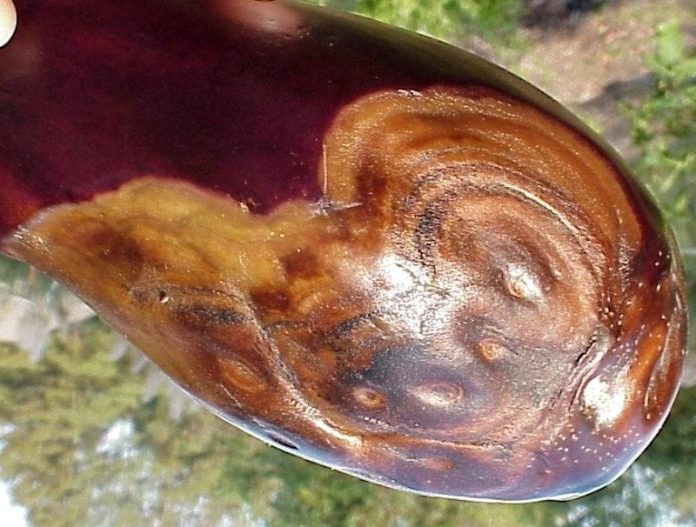
It is also worth observing timely agricultural techniques, such as watering, crop rotation, weeding and loosening.
Late blight
Late blight is one of the most common diseases that eggplants are exposed to when grown in greenhouse conditions. The first symptoms of pathology are brown spots on the trunk and leaves of plants. Then a whitish bloom is observed on the underside of the tops. Over time, the plants dry out, and the fruits begin to deteriorate with hard rot.
There are several ways to treat eggplant for late blight. However, according to experienced gardeners, the following folk method is considered the most effective:
- Pour 200 g of chopped garlic into 3 liters of water.
- Insist the garlic solution for 2 weeks in a dark place.
- After this time, dilute the infusion in a 1: 1 ratio with water.

It is recommended to spray all the plants with the resulting liquid, and sprinkle the soil with wood ash.
Alternaria (gray rot)
Alternaria is dangerous for eggplants, both outdoors and indoors. First of all, these diseases are exposed to the lower fruits, which get water during soil irrigation. In addition, there is a possibility of infection during a long period of eggplant ripening.
Alternaria symptoms are characterized by gray or brown spots on the leaves. There are cases when eggplants themselves are affected by this disease.
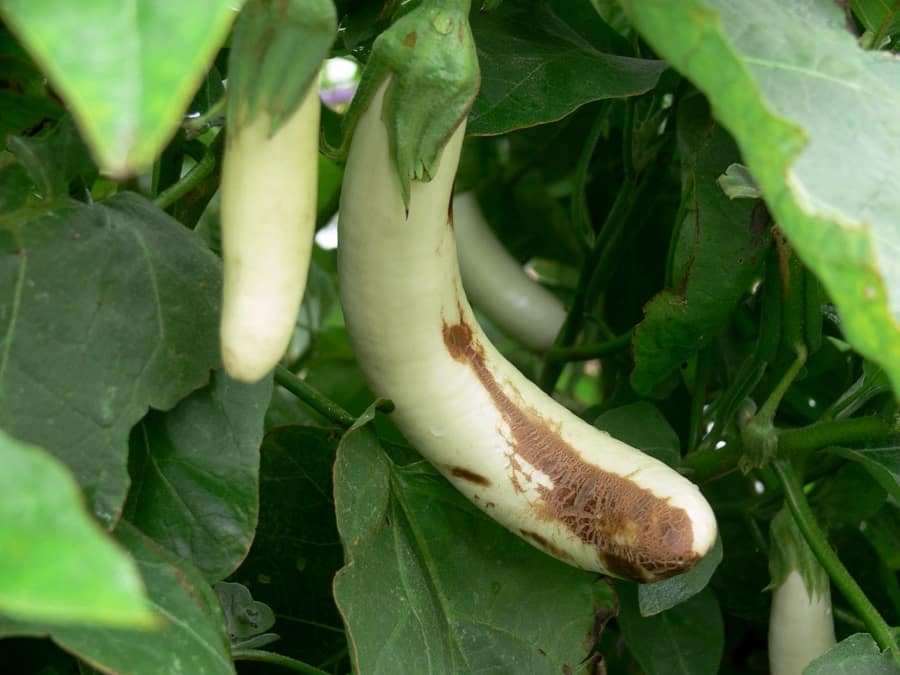
Alternaria is treated with contact fungicides. Spraying is carried out with a spray bottle so that the solution falls on the undersides of the leaves.
Sclerotinosis (white rot)
Sclerotiniasis is a fungal disease that spreads in the ground. Most often, the occurrence of this disease is fog, prolonged rains, thickening of plantings.
Initially, the disease damages only the root system, then the fungus makes its way into the plant.
Dark spots begin to appear on the stems and leaves of the vegetable, and the fruit itself acquires a softened structure. Over time, eggplants become slimy with white spots.
Treatment of sclerotinosis is carried out in the following order:
- The damaged parts of the eggplant are removed.
- The cuts are processed with wood ash.
- Plants are fed with complex fertilizers.
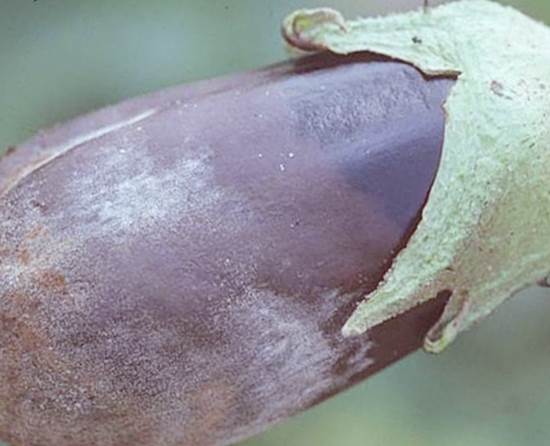
Then it is recommended to ventilate the greenhouse and warm it up until the dampness disappears.
Cercosporiasis
This fungal disease from the genus Hyphomycetales is transmitted through spores when the soil is irrigated, working equipment or by wind. At the initial stage of cercosporium disease, eggplants have white spots with small veins on the leaves, stem and stalks.In later periods, the foliage of plants dies off completely, the fruits acquire a non-marketable appearance and lose their taste.
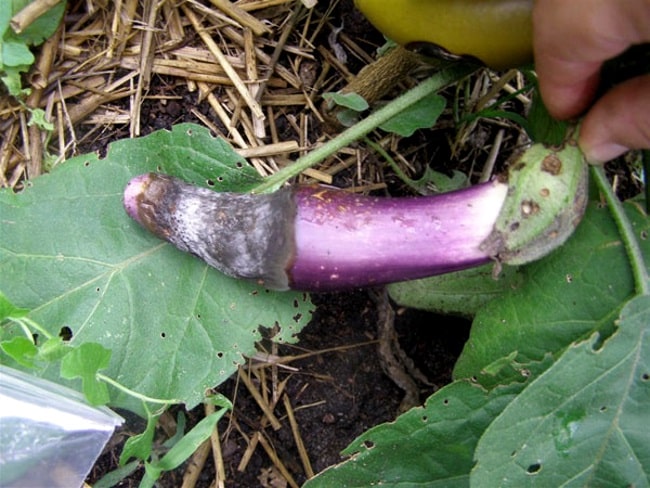
Treatment of cercosporia involves the use of Bordeaux liquid or another fungicide. Complex mineral fertilizers will also help to increase the resistance of eggplants to this fungal disease.
Phytoplasmosis
Phytoplasmosis is a viral disease that is dangerous for eggplants when grown outdoors. However, there are cases when this disease harms plants and greenhouse buildings. When infected with stolbur in eggplants, the bush is deformed. The leaves become shallow and become white or purple. The stalk of the plants becomes stiff, the inflorescences change their color and regular shape.
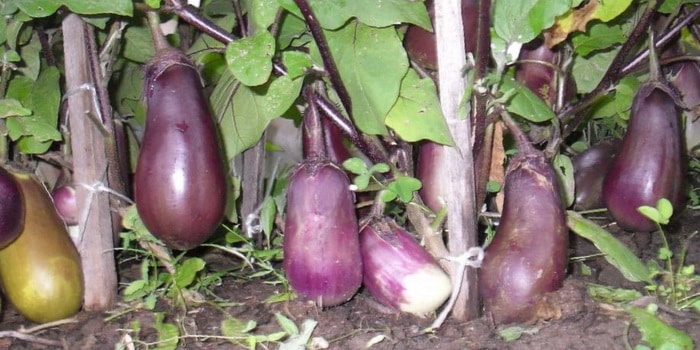
This disease is usually treated with insecticides. Eggplant processing is carried out 2 times with an interval of 13-16 days. In this case, all heavily affected bushes must be removed, and the earth must be disinfected.
Pests, their signs and control capabilities
Very often, eggplants suffer not only from various diseases, but also from pests. If the plants are not protected in a timely manner and control measures are not taken, gardeners will not get a good harvest.
Slugs
These gastropods actively eat both bushes and eggplant fruits. Their active reproduction is served by frequent rains and thickening of plantings. These pests can be identified by large holes in plants and by mucus that they leave when moving.
Slug control methods:
- Remove weeds in a timely manner.
- Ventilate greenhouse structures regularly.
- Sprinkle the paths and paths with coarse salt or sand.
- Mulch the soil with spruce needles.
- While loosening the soil, sprinkle with black or red pepper.
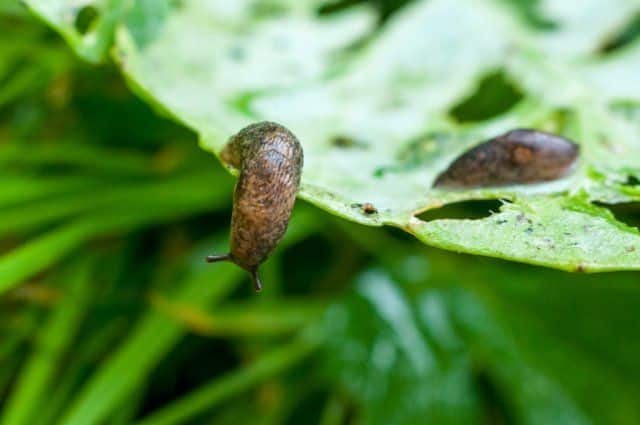
In cases where the above methods do not give a positive result, you can use metaldehyde. For this, this powder at the rate of 3 g per 1 sq. m it is recommended to sprinkle the paths in the aisles.
Cruciferous flea
Insects such as cruciferous fleas can be active in almost all areas of the infield. However, they do not tolerate shaded and humid places. Eggplant leaves are attacked by these small black insects. In a short period, cruciferous fleas are able to destroy all the greenery of the bush, leaving only streaks. At the same time, not only adult insects are dangerous for eggplants, but also their larvae. For their development, small individuals actively eat the roots of plants, which leads to their death.
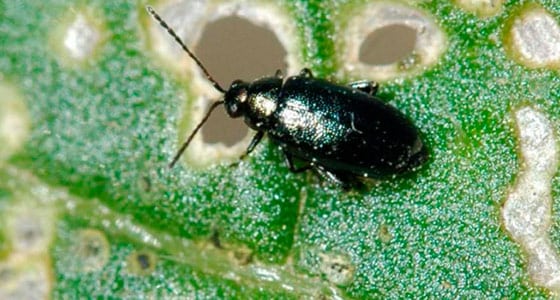
In the fight against cruciferous fleas, dandelion or garlic infusion is used. In order for the liquid to adhere well to the plants, it is recommended to add shavings of laundry soap to it.
Aphid
On the territory of our country, there are several types of aphids, which feed on eggplant juices. Their color can be varied, from dark black to bright red. But despite this, the methods of dealing with them are identical.
Home methods for exterminating insects:
- Laundry soap shavings are dissolved in water. The resulting solution is applied to plants 2 times with an interval of 1 week.
- In a 1: 1 ratio, mix edible salt and soda. Water and laundry soap are added to the resulting mass. The resulting mixture is sprayed with eggplants once every 3 days until the insects disappear completely.
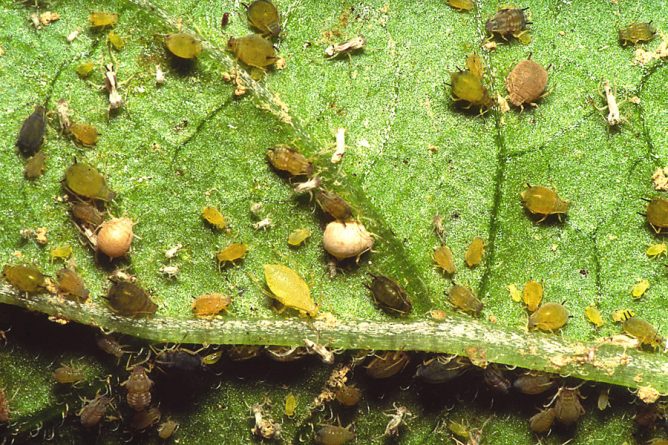
From professional means, gardeners are advised to use biological products that do not contain harmful chemical components.
Whitefly
Insects such as whiteflies cause significant damage to eggplants. First, they absorb large amounts of plant sap. Secondly, whiteflies secrete dangerous dew, which contributes to the development of a sooty fungus.
Insects are easy to spot.As a rule, the midges themselves and their larvae are located on the back of the leaves.
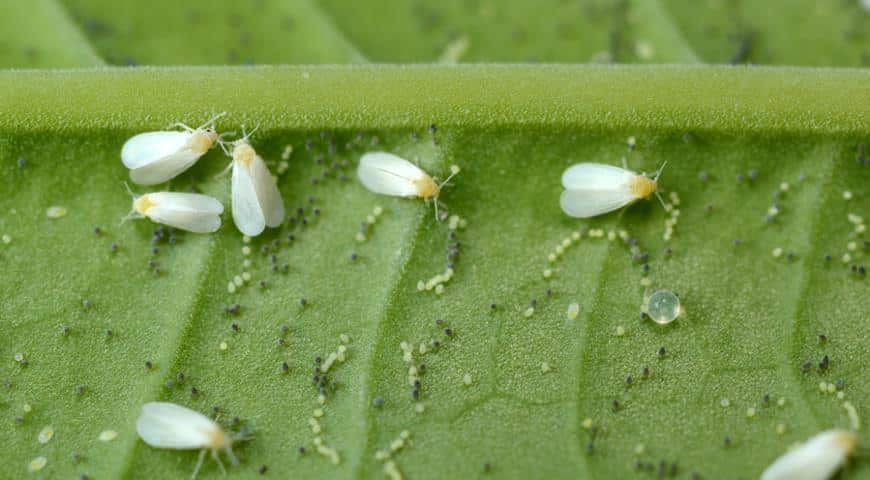
If the whiteflies have not yet had time to lay the larvae, a soapy solution of tar soap is used in the fight against them. In the presence of children, it is recommended to use drugs that include avermectins.
Colorado beetle
Colorado beetles are quite voracious pests. In 1 month, one female eats more than 4 g of greens, the larva is about 1 g. In this case, each female lays about 700 eggs in one season. Therefore, if pests are not destroyed in time, gardeners will be left without eggplants.
In the fight against the Colorado potato beetle, insecticides are considered the most effective, such as Imidacloprid and Pencycuron.
The following methods are used without chemistry:
- Collecting beetles and larvae by hand.
- Dusting plants with wood ash.
- Spraying with soapy water.
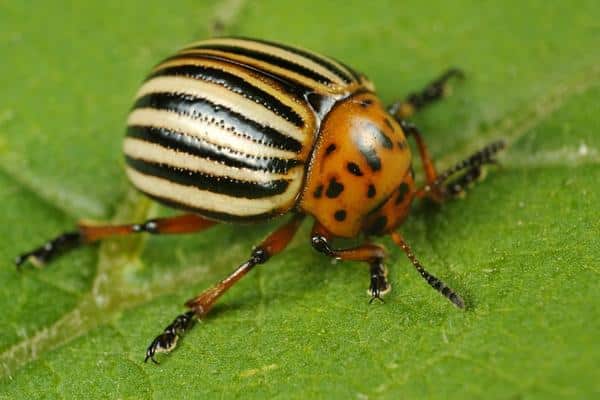
You can also use repellent plants that scare off Colorado beetles with their smell. Among them, the most effective are: marigolds, calendula and celery.
Spider mite
Spider mites are considered the smallest pests for eggplant. Their size does not exceed 0.5 mm. But despite this, they cause great harm to both the plants themselves and their fruits.
The following signs will indicate the presence of a spider mite on eggplants:
- white spots on the sheets;
- drying of the tops;
- a cobweb forms under the bushes.
If, when a spider mite is found, you immediately start to fight, then you can do without chemicals.
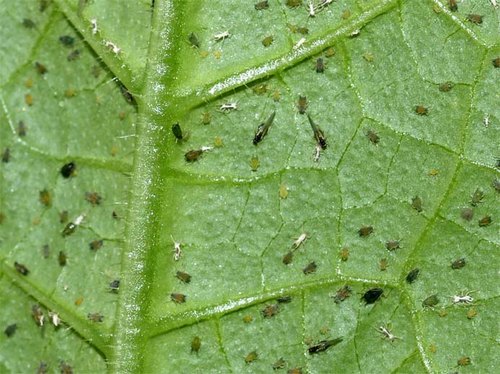
To destroy insects you will need:
- Increase humidity.
- Remove all damaged plant parts.
- Tear off all the available web.
For a quick effect, plants can be sprayed with ammonia diluted in water.
Medvedka
Medvedka is an underground insect that is difficult to see. It is possible to understand about the presence of this pest only by the holes and trenches made in the ground. The insect feeds exclusively on the roots and aerial parts of eggplants.
You can get rid of the bear in the following ways:
- On the site, lay out bait from eggshells and vegetable oil.
- Pour insect burrows with a solution of 150 ml of kerosene and 10 liters of water.
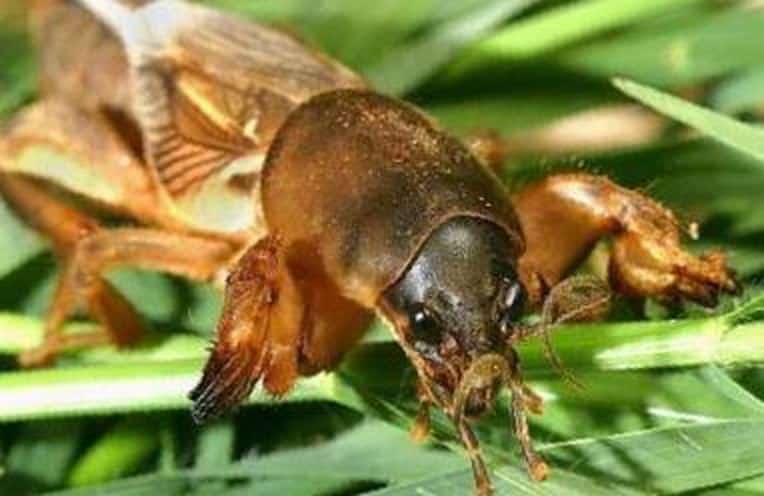
The destruction of pests also involves the use of a highly toxic drug - "Phenaxin". Its granules are poured into places where there is a large accumulation of insects.
Prevention measures
Any disease is easier to prevent than to cure. Therefore, in order to reduce the risk of disease, it is recommended to carry out preventive work in advance.
A set of measures to prevent the development of diseases:
- Seed processing.
- Disinfection of soil and greenhouses.
- Ventilation of greenhouse structures.
- Timely watering.
- Removing weeds when they first appear.
- Top dressing with complex fertilizers.
- Pest control.
- Loosening the soil.
Also, eggplants cannot be planted in one place annually. The best predecessors for them are: peas, beans, cucumbers, cabbage.
As you can see, when growing, eggplants require special attention and adherence to the rules of agricultural technology. Without proper care, they are exposed to various diseases and insect attacks. But if you make an effort, then every gardener will definitely get the desired result of the yield of tasty and healthy fruits.

